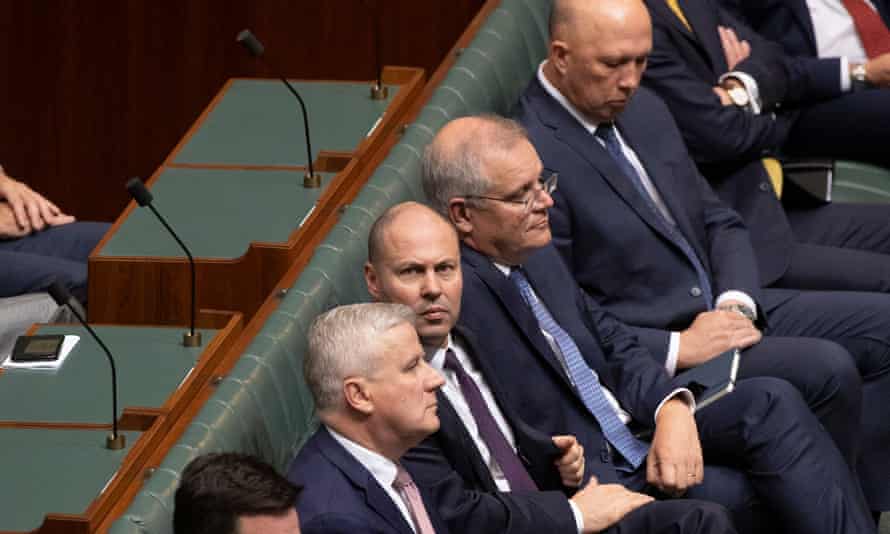Extract from The Guardian
Treasurer says Coalition has ‘stayed true to our consistent position’ despite aged care royal commission call to increase wages in sector.

Treasurer Josh Frydenberg says ‘the key to driving increased real wages is actually to get a tighter labour market’.
Last modified on Sun 16 May 2021 14.07 AEST
Josh Frydenberg has conceded inflation will outstrip wage growth this year – meaning workers face a real pay cut – but defended the government’s decision not to do more to boost wages.
The treasurer told ABC’s Insiders on Sunday the Coalition had “stayed true to our consistent position” when it “noted” – but did not accept – the aged care royal commission’s call to increase workers’ wages in the sector.
Frydenberg said the Coalition is “not seeking to cut spending after the next election”, suggesting that fiscal repair will be achieved through economic growth and not cuts to services.
Given the pace of the jobs recovery and generosity of the budget, Labor is now targeting wage stagnation as a possible weakness for the Coalition leading into the next election.
Frydenberg told Insiders that “inflation is above wages this year”, but argued inflation was high in contrast to 2020 when it was artificially lowered by temporary free childcare, lower rents and petrol prices.
After growth of 1.5%, wages are set to grow by 2.25%, 2.5% and 2.75%, which will be “above inflation” in the remaining years of the forward estimates, he said.
“But the key to driving increased real wages is actually to get a tighter labour market.
“That’s why you’ve seen in these budget papers that the unemployment rate comes below 5% by the end of next year.”
The Morrison government made a purely factual submission to the Fair Work Commission’s annual minimum wage review and will also stay neutral in a landmark work value case brought by the Health Services Union to boost pay in aged care.
Asked about this failure to call for a minimum wage rise, Frydenberg replied the Coalition had “always been consistent with respect to leaving it to the FWC to make those decisions”.
Submissions advocating a pay rise are not binding and therefore do not impinge on the commission’s independence.
Frydenberg implied the government submission provided tacit support for a wage rise because it “pointed out the strengthening of the Australian economy”.
The submission also warned of “uncertainties” in the economic outlook and urged the commission “to take a cautious approach” taking into account the importance of creating jobs and “ensuring the viability” of small businesses.
The submission was interpreted by Australian unions as a bid to suppress minimum wage rises.
In the aged care work value case – in which 200,000 aged care workers are seeking a pay rise of 25%, or $5 per hour – the government has said it will only “provide information and data to the FWC as required”.
Frydenberg noted the case asking for a “significant boost” to pay in the aged care sector and said the government would “let that work its way through”.
Asked why it had not followed the royal commission recommendation to do more, Frydenberg noted it had “also recommended we should put a tax on all Australians” to pay for improvements in aged care.
Frydenberg said the government had accepted the “vast bulk” of recommendations, provided $17.7bn for aged care in the budget and 33,000 new training places to boost staffing in the sector.
In its interim report and again in the final report, the aged care royal commission found the sector suffers from severe difficulties in recruiting and retaining staff.
“Workloads are heavy,” the interim report said. “Pay and conditions are poor, signalling that working in aged care is not a valued occupation.”
Anthony Albanese told reporters in Narangba that Frydenberg had “no plan” to deal with low wages and “no answers as to what cuts will be made after the next election”.
“Unless you deal with the issue of aged care workers’ pay then you won’t be able to attract the workforce that’s needed,” the Labor leader said.
Earlier, Frydenberg said the Coalition is “always striving to balance the books” but would not say when and how it would attempt to return to surplus. “We are not seeking to cut spending after the next election,” he said.
Frydenberg defended the fact the budget projects a decade of deficits by noting the net debt to GDP ratio “comes down each and every year”, due to growth of the economy outstripping growth in debt.
“The deficits have come down by two-thirds over [four years] and when you look at other countries with a AAA credit rating … our fiscal consolidation over the next six years is happening faster than those other countries.”
Frydenberg noted that half of new spending in the 2021-22 budget is temporary, including the $7.8bn one-year extension of the low and middle income tax offset.
Frydenberg defended the third stage of income tax cuts, which will benefit middle and high income earners by flattening tax brackets, so that income between $45,000 and $200,000 is taxed at the rate of 30%.
He said these tax cuts are “already legislated” and will create a “stronger and fairer” tax system.
Frydenberg argued without the third stage, someone earning $90,000 will be $1,120 worse off. He refused to acknowledge that low to middle income earners will be up to $1,080 worse off per year when the temporary offset expires, citing comparisons to the 2017-18 year to obscure the pending tax hike.
No comments:
Post a Comment